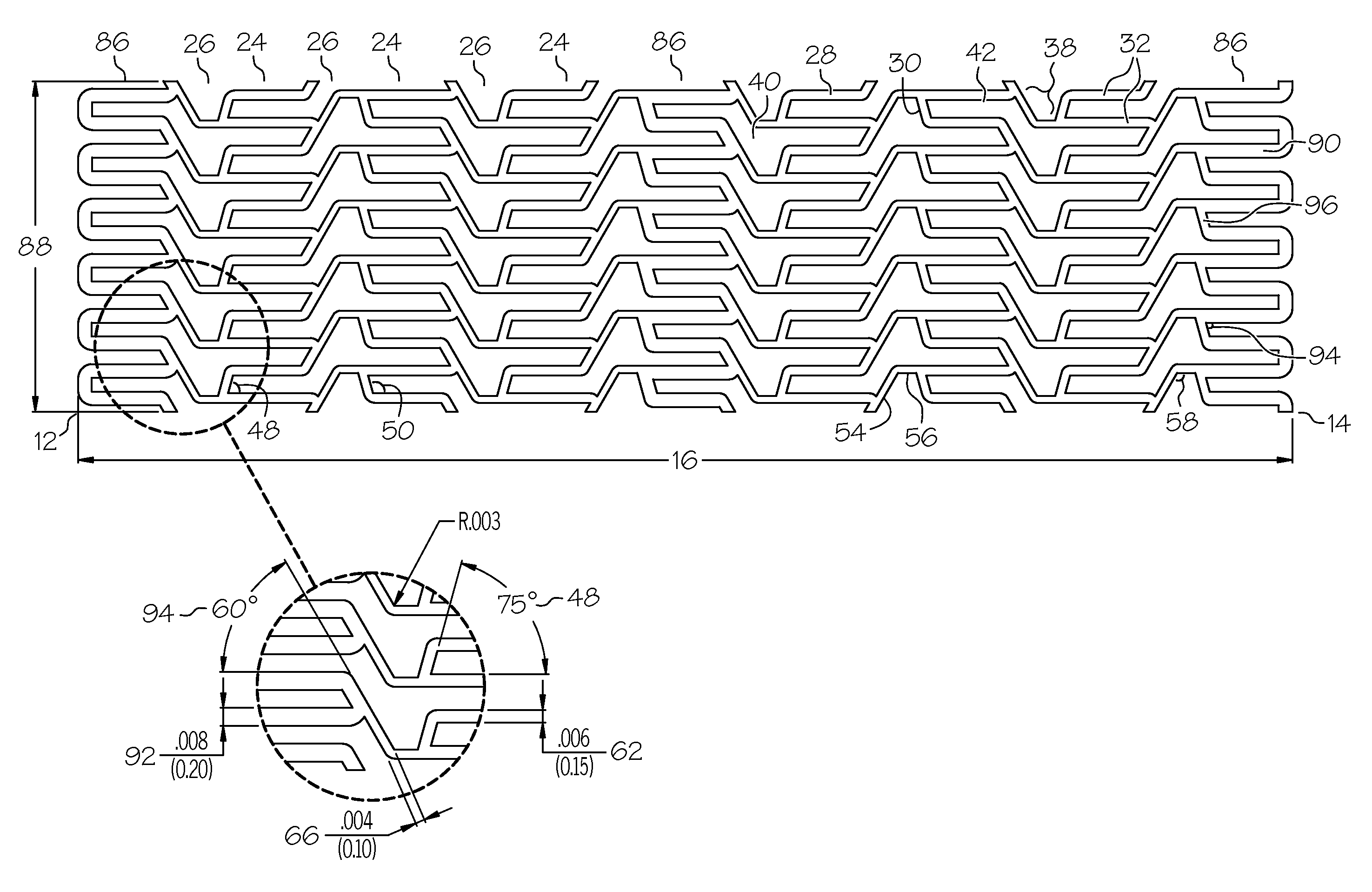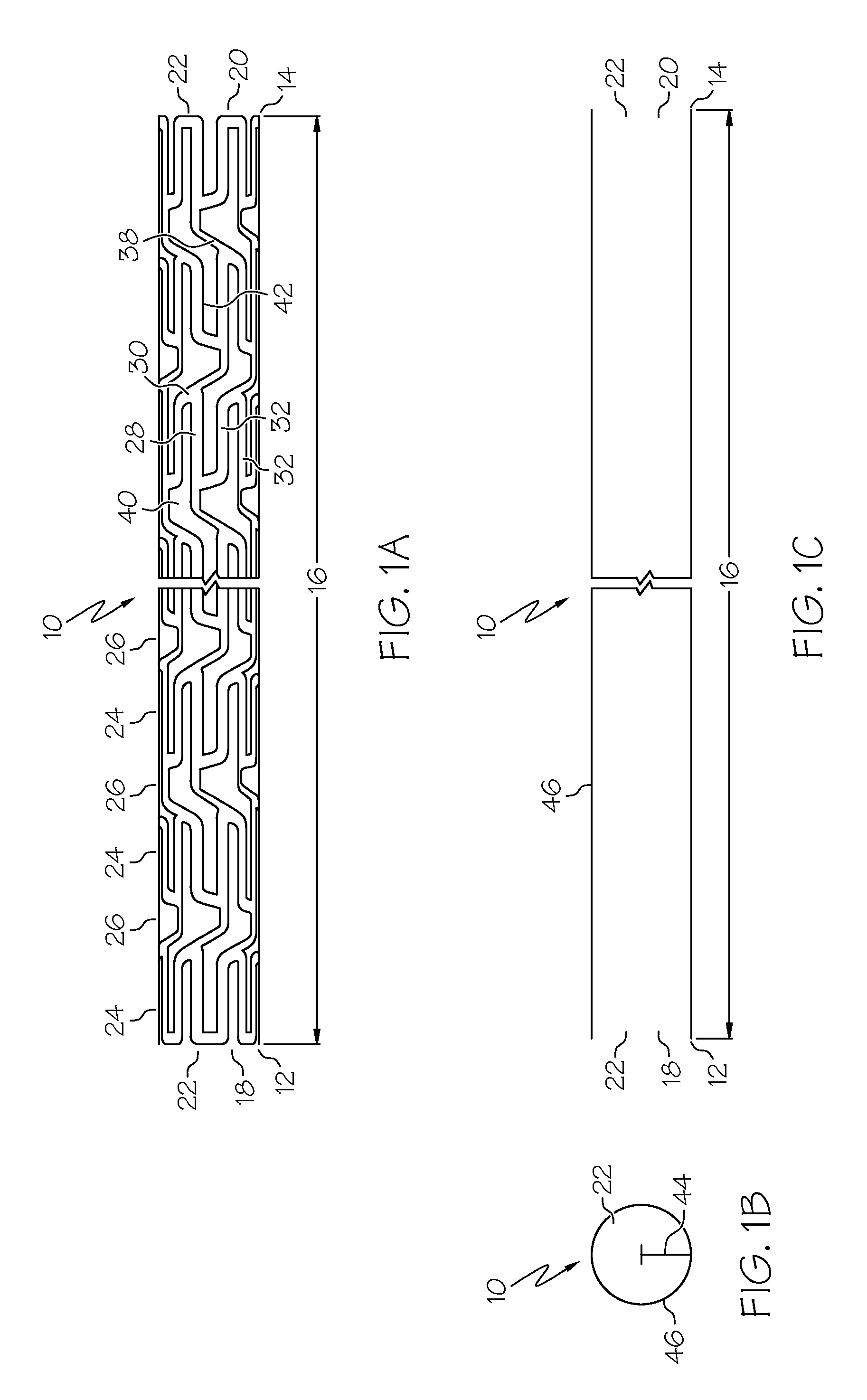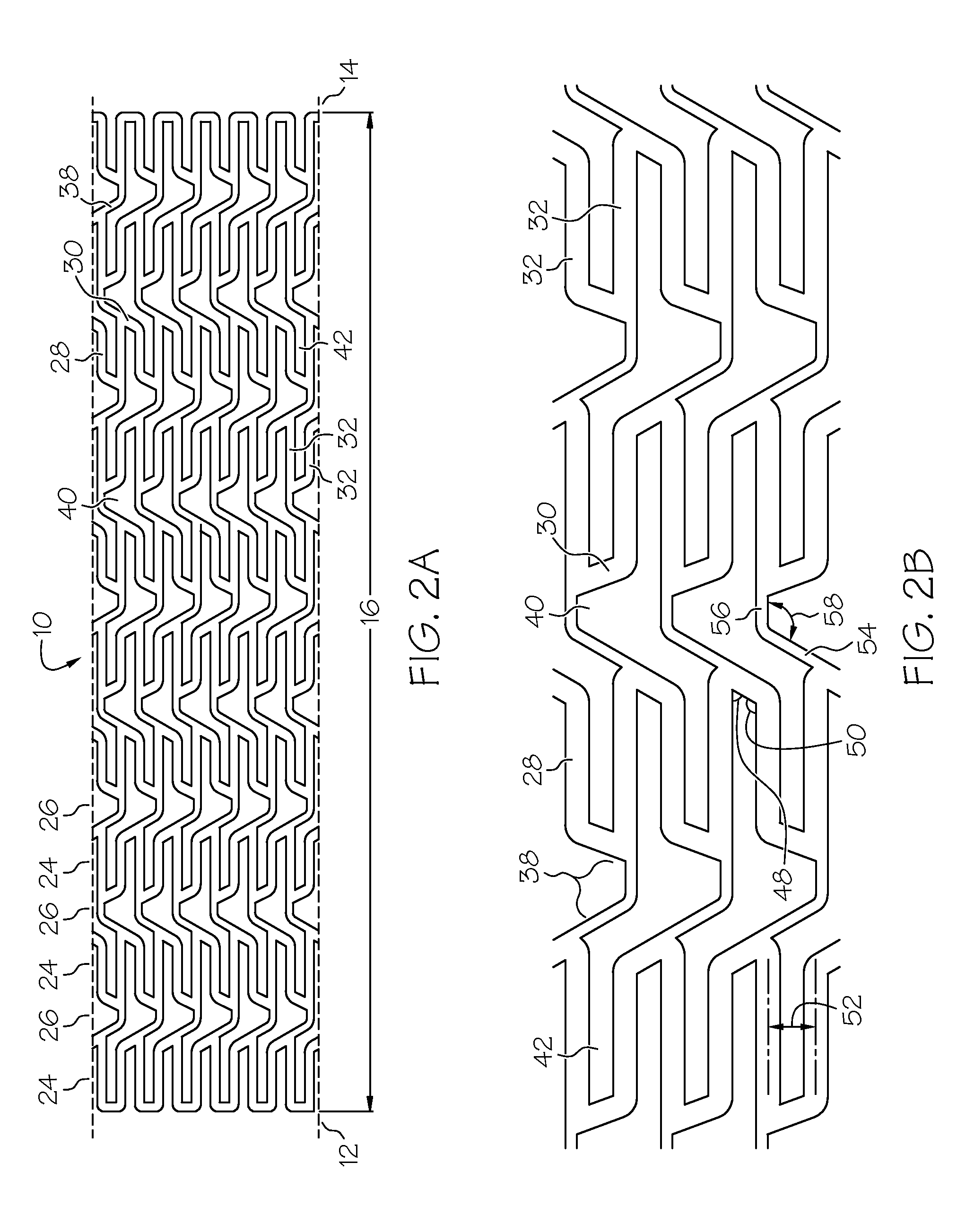Intravascular stent
a stent and intravascular technology, applied in the field of intravascular stents, can solve the problems of reducing and reducing the length of the stent, so as to reduce the foreshortening of the stent length, reduce the risk of stent rupture, and improve the effect of stent length
- Summary
- Abstract
- Description
- Claims
- Application Information
AI Technical Summary
Benefits of technology
Problems solved by technology
Method used
Image
Examples
first embodiment
[0049]the present invention is shown in FIGS. 1A, 1B, 1C, 2A and 2B. Referring to FIG. 1A, an elongate hollow tubular stent 10 in an unexpanded state is shown. A proximal end 12 and a distal end 14 define a longitudinal length 16 of stent 10. The longitudinal length 16 of the stent 10 can be as long as 100 mm. or longer. A proximal opening 18 and a distal opening 20 connect to an inner lumen 22 of stent 10. Stent 10 can be a single piece, without any seams or welding joints or may include multiple pieces.
[0050]Stent 10 is constructed of two to fifty or more expansion columns or rings 24 connected together by interspersed connecting strut columns 26. The first column on the proximal end 12 and the last column on the distal end 14 of stent 10 are expansion columns 24.
[0051]Expansion columns 24 are formed from a series of expansion struts 28, and joining struts 30. Expansion struts 28 are thin elongate members arranged so that they extend at least in part in the direction of the longit...
second embodiment
[0075]FIG. 5 shows the present invention in which the stent 10 in its expanded form has a gradual taper from proximal end 12 to distal end 14. The shaded segments 72, 74, 76, 78, 80, 82 and 84 of expansion struts 28 represent regions of expansion struts 28 to be removed. Removal of the shaded segments 72, 74, 76, 78, 80, 82 and 84 provides stent 10 with a gradual taper when expanded with distal end 14 having a smaller expanded diameter than proximal end 12. The degree of shortening of the expanded diameter of the stent 10 at a given expansion column 24 will be proportional to the length of the removed segment 72, 74, 76, 78, 80, 82, or 84 at that expansion column 24. In the expanded stent 10 the shortened expansion struts 28 will have a shortened component along the circumference of the stent resulting in a shortened circumference and diameter. The tapered diameter portion can be positioned anywhere along the length of stent 10, and the tapering can be made more or less gradual by r...
third embodiment
[0079]the present invention shown in FIGS. 6A and 6B has multiple reinforcement expansion columns 86 placed along the length of the stent 10. The reinforcement columns 86 are placed along the stent length to provide additional localized radial strength and rigidity to stent 10. Additional strength and rigidity are especially important at the ends of the stent to prevent deformation of the stent both during delivery and after placement. During delivery the stent ends can catch on the vessel wall possibly deforming the unexpanded stent and altering its expansion characteristics. After the stent has been placed it is important that the stent ends are rigid so that they set firmly against the vessel wall, otherwise, during a subsequent catheter procedure, the catheter or guidewire can catch on the stent ends pulling the stent away from the vessel wall and possibly damaging and / or blocking the vessel.
[0080]The specific variation of the third embodiment of stent 10 depicted in FIGS. 6A an...
PUM
 Login to View More
Login to View More Abstract
Description
Claims
Application Information
 Login to View More
Login to View More - R&D
- Intellectual Property
- Life Sciences
- Materials
- Tech Scout
- Unparalleled Data Quality
- Higher Quality Content
- 60% Fewer Hallucinations
Browse by: Latest US Patents, China's latest patents, Technical Efficacy Thesaurus, Application Domain, Technology Topic, Popular Technical Reports.
© 2025 PatSnap. All rights reserved.Legal|Privacy policy|Modern Slavery Act Transparency Statement|Sitemap|About US| Contact US: help@patsnap.com



